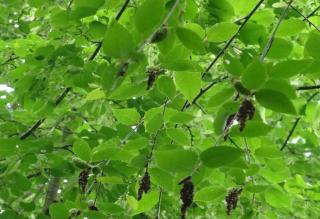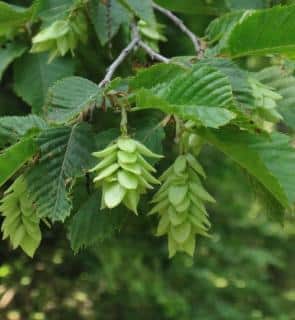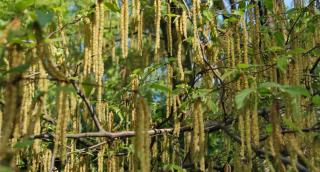

European hophornbeam is a beautiful ornamental tree that can reach quite an impressive size when fully mature.
Top Hophornbeam facts
Name – Ostrya carpinifolia
Family – Betulaceae
Type – tree
Height – 32 to 65 feet (10 to 20 meters)
Exposure – full sun
Soil – ordinary
Foliage – deciduous
Flowering – April-May
Planting, care and pruning, here is all our advice for caring for hophornbeam (different from hornbeam):
 Hophornbeam would flee excessively acidic soil if it could, preferring rather chalky soil instead; but it’ll also grow well in neutral soil.
Hophornbeam would flee excessively acidic soil if it could, preferring rather chalky soil instead; but it’ll also grow well in neutral soil.
 It isn’t really a requirement to prune.
It isn’t really a requirement to prune.
You can, however, eliminate dead, weak or damaged branches whenever you notice them.
Hophornbeam is preferably pruned in fall or at the end of winter.
As for care, hophornbeam requires no attention at all once it has settled in comfortably.
On top of that, it is very resistant to most diseases which means you won’t have to treat it.
 This tree, which has leaves and an overall bearing that are very similar to those of common hornbeam, also bears flowers that resemble those of hops. That’s the reason for it’s surprising name!
This tree, which has leaves and an overall bearing that are very similar to those of common hornbeam, also bears flowers that resemble those of hops. That’s the reason for it’s surprising name!
You’ll only have to wait a few years for these magnificent whitish flowers to appear in your garden.
The tree grows into with a round bearing and does so quite quickly, actually. Although it has, in some cases, exceeded heights of over 65 feet (20 meters), usually hophornbeam will top out at between 35 and 50 feet (10 to 15 meters) at most when fully grown.
Since hophornbeam is very hardy, it will resist diseases and thus helps avoid using chemical products.